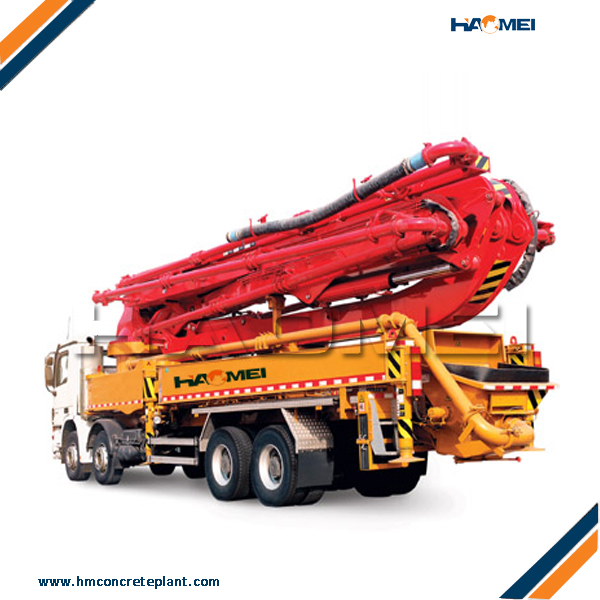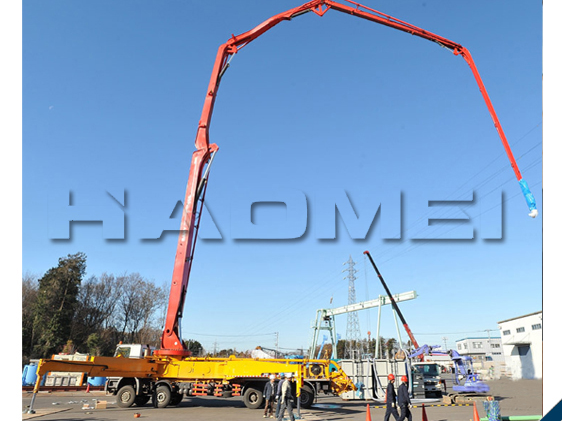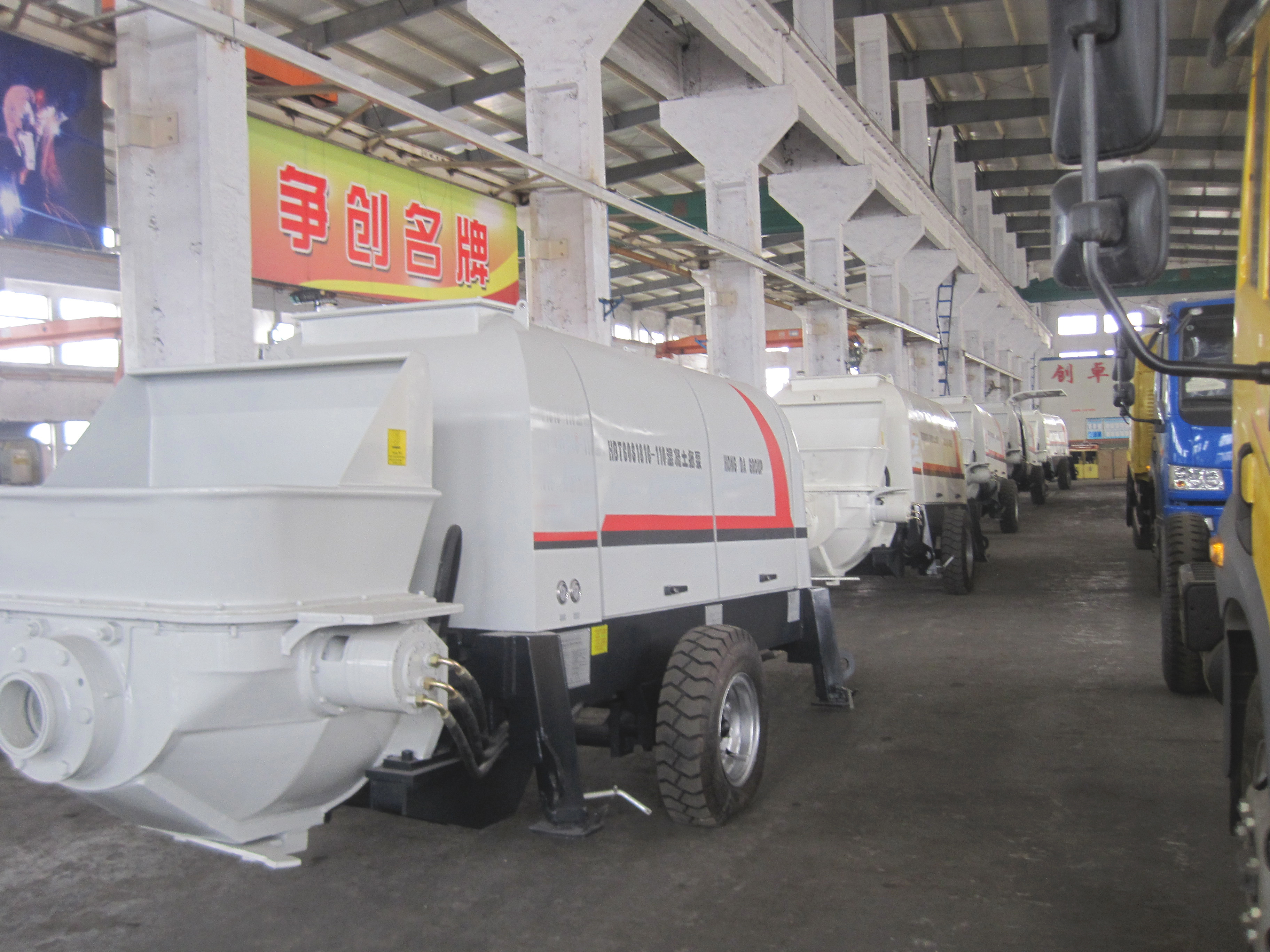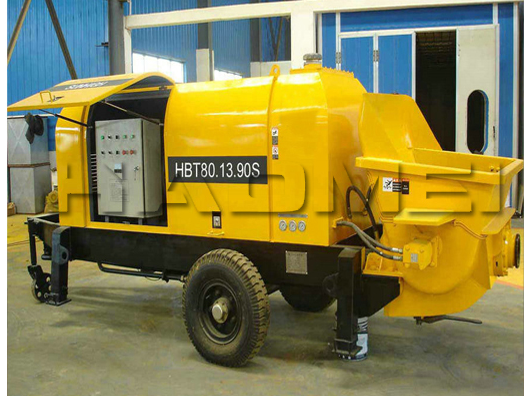A concrete pump is a machine used for transferring liquid concrete by pumping. There are different types of concrete pumps.
A common type of concrete pump for large scale construction projects is known as a boom concrete pump, because it uses a remote-controlled articulating robotic arm (called a boom) to place concrete accurately. It is attached to a truck or a semi-trailer. Boom pumps are capable of pumping at very high volumes and are less labor intensive to operate when compared to line or other types of concrete pumps.
The second main type of concrete pump, commonly referred to as a "line pump" or trailer-mounted concrete pump, is either mounted on a truck or placed on a trailer. This pump requires steel or flexible concrete placing hoses to be manually attached to the outlet of the machine and feed the concrete to the place of application. The length of the hoses varies, typical hose lengths are 3.0, 3.8, 7.6, and 15.2 metres (10, 12.5, 25, and 50 ft), depending on the diameter. Due to their lower pump volume, line pumps are used for smaller volume concrete placing applications such as swimming pools, sidewalks, single family home concrete slabs and most ground slabs.

There are also skid mounted and rail mounted concrete pumps, but these are uncommon and only used on specialized jobsites such as mines and tunnels.
History
Scientists still cannot say exactly who invented concrete several millennia ago. In the same way, the invention of the concrete pump, equipment for transferring a freshly prepared mixture over long distances directly to the concreting site, is shrouded in mystery. At the beginning of the 20th century, there were several attempts to create such devices that greatly facilitate and speed up monolithic construction. As now, concrete pumping plants were needed in the construction of roads, bridges, large and small infrastructure facilities. Some sources claim that the first concrete pump was assembled in 1907 in Germany. However, the most famous “discoverers” were the German engineers Fritz Hell and Max Giese in 1927, who were prompted by the idea of using a concrete tower on the site. They decided to supply the solution to the site directly from the concrete mixer. The concrete pump developed design made it possible to pump a mixture with a lower water content and a high content of large fractions (gravel, crushed stone), which made pouring cheaper, shortened the concrete hardening time, and therefore accelerated construction. The first experiments led to the creation of concrete equipment that pumped solutions at a distance of 38 m (vertically) and 120 m (horizontally).
In 1959, the German company “Schwing” (more precisely, Friedrich Schwing, its founder) made a real breakthrough, because the equipment presented by the company constructive principle is still used by all the concrete pumping plants manufacturers. We are talking about the release of the world’s first with two cylinders oil-hydraulic concrete pump (or a pumpcrete machine). Already in 1962, Friedrich Schwing patented the “S-pipe”, which is found today in almost all the latest generation concrete pumps.













02 Comments
Lorem ipsum, dolor sit amet consectetur adipisicing elit. Dicta perferendis asperiores voluptatum saepe repellat atque obcaecati dolores nulla, explicabo harum inventore sed corrupti molestiae aspernatur.
Lorem ipsum dolor sit amet consectetur, adipisicing elit. Qui expedita magnam ea tempora consectetur fugit dolorum numquam at obcaecati voluptatibus.
Lorem, ipsum dolor sit amet consectetur adipisicing elit. Error, ipsa dolor exercitationem culpa obcaecati illo veniam voluptatem perferendis hic nisi tempora omnis, mollitia unde doloribus.